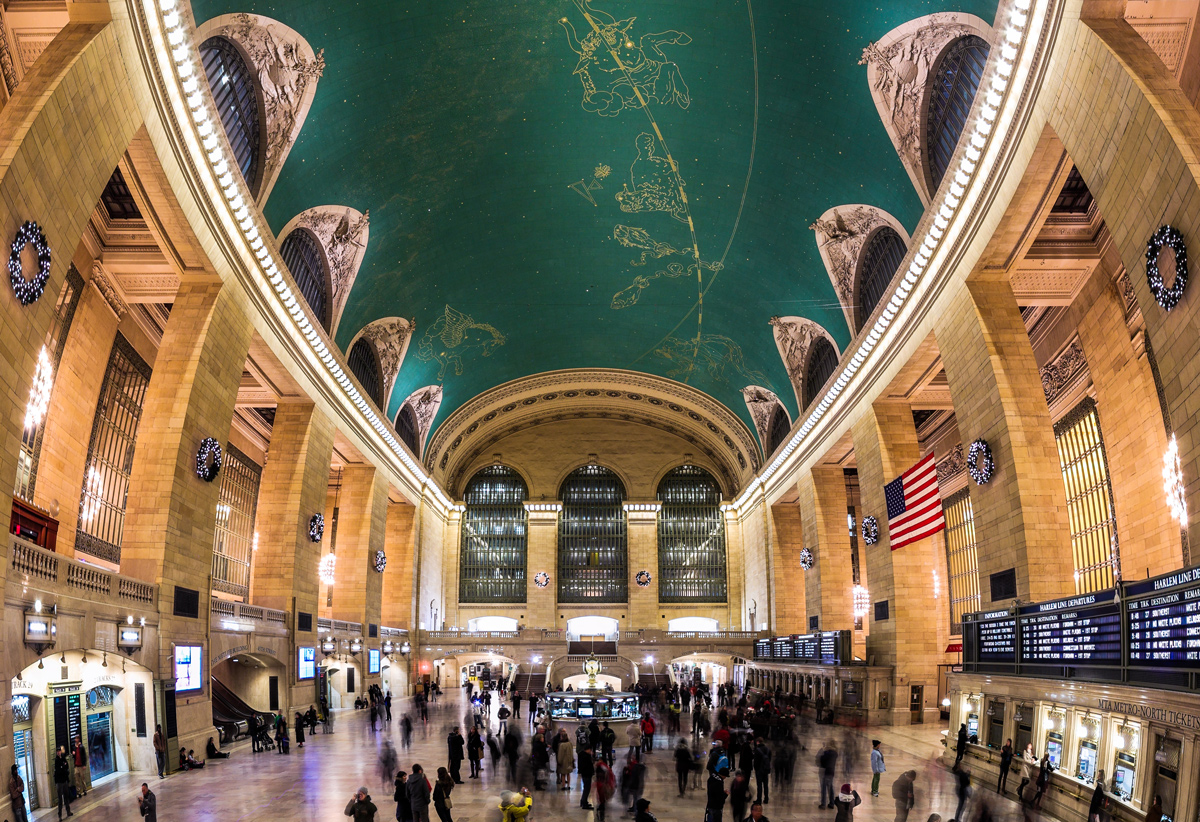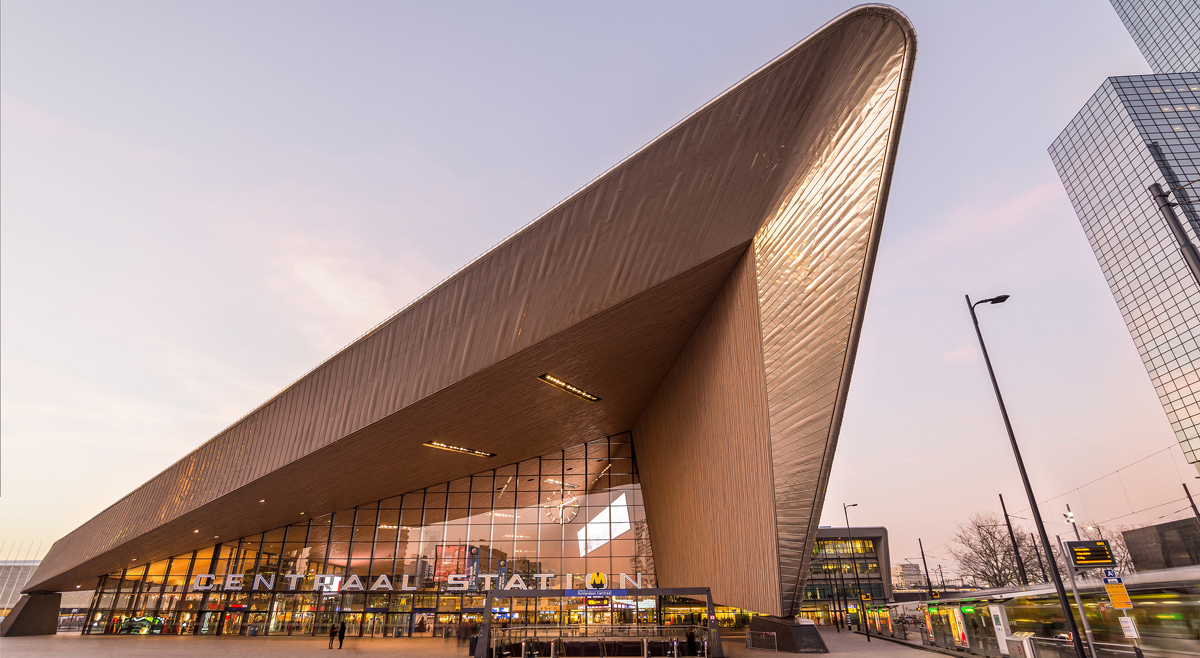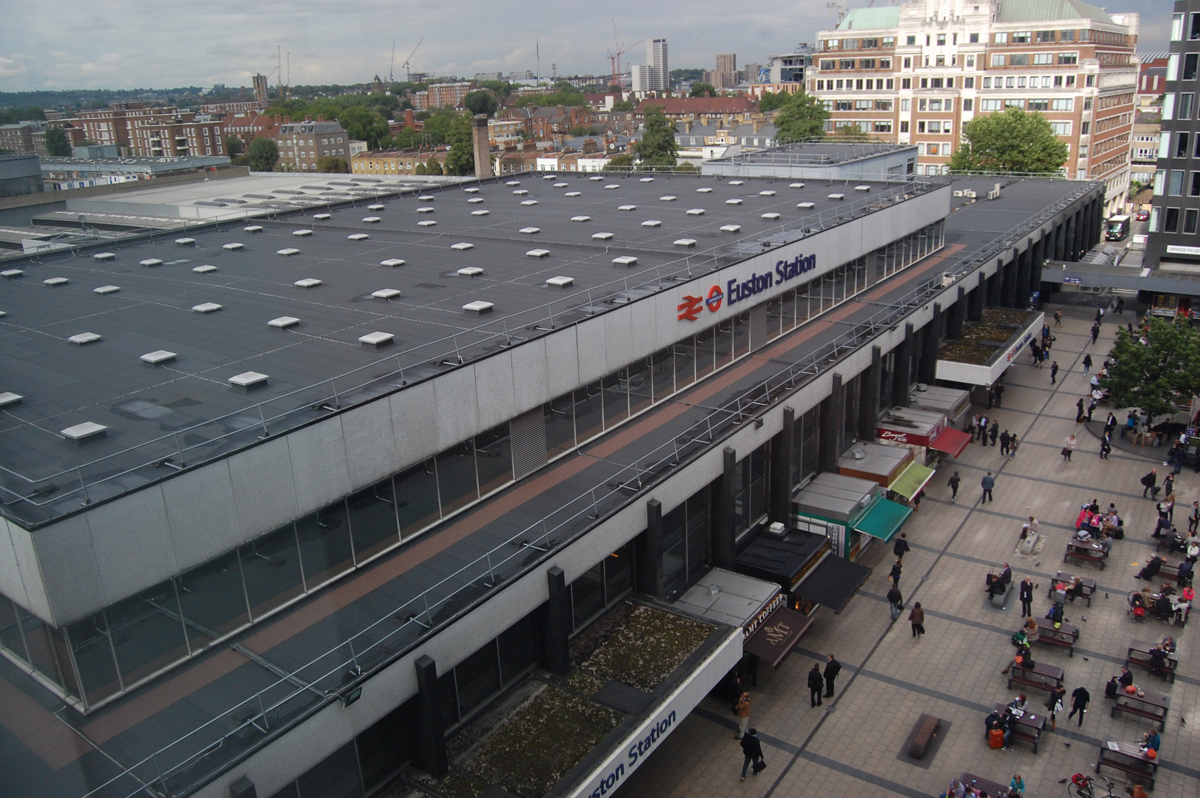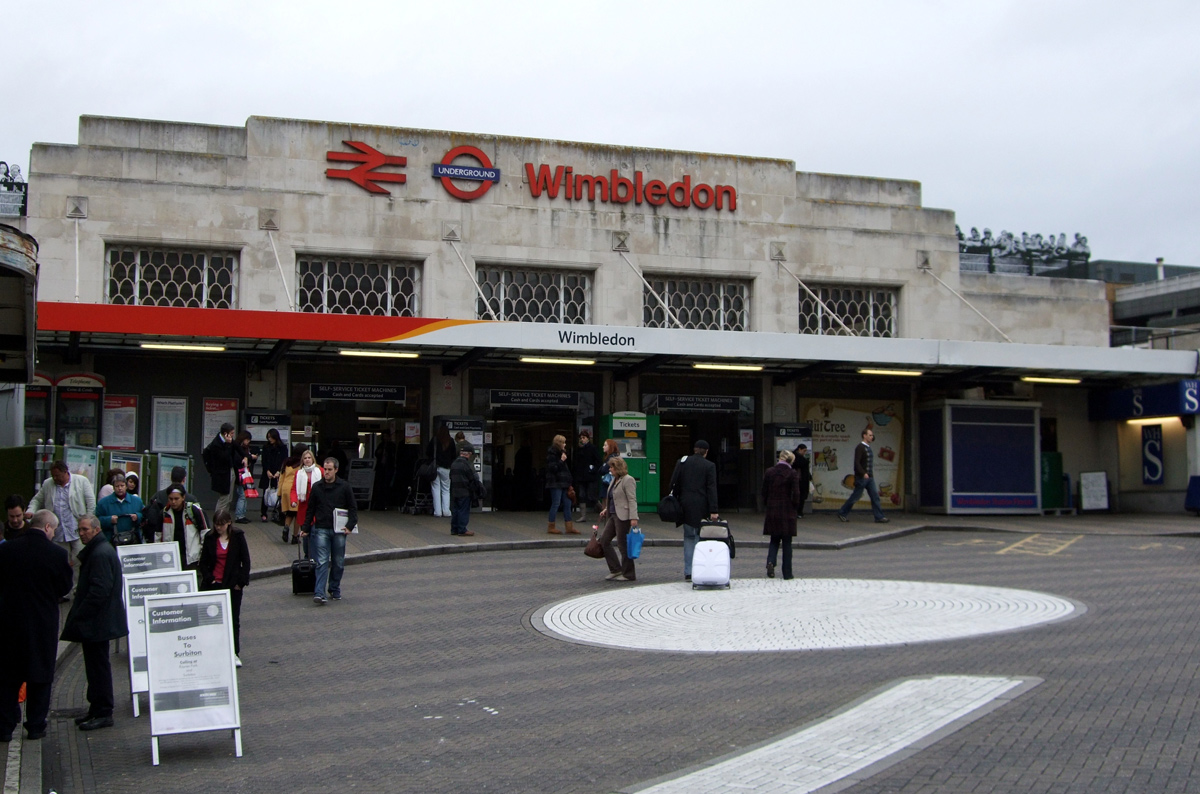Stations
The world’s largest stations are no longer seen as merely an entry point to rail travel, but fully fledged destinations in their own right. Incoming passengers expect stations to be gateways to cities, replete with amenities and intermodal links. Meanwhile, urban planners see environmental sustainability and the economic potential of major rail hubs as vital considerations for future initiatives.
Australian design consultancy Arcadis has assessed major rail hubs on four elements, including connectivity, urban environment, social place-making and economic development. These criteria were used to rank the stations in accordance with their commitment to ‘mobility-orientated development’ (MODe).
So which stations are forging a path when it comes to increasing mobility, and which still have work to do, according to Arcadis?
The world’s best rail hubs

Grand Central Terminal, New York, US
Coming in at the top of the list, New York’s Grand Central Terminal is one of the most recognisable rail hubs worldwide, with its cathedral-like central hall serving as both an historical landmark and a convivial meeting place for tourists. Spread across 49 acres, Grand Central is home to almost 50 platforms serving more than 70 tracks.
More than 250,000 people commute via the station daily, but these form only a fraction of its 750,000 visitors. Many pass through to peruse the station’s retail offering, including it 60 shops and 35 catering outlets, or participate in its myriad public events, which have included book signings, holiday markets and exhibitions.
Credit: mandritoiu/Shutterstock.

Rotterdam Centraal Station, Rotterdam, the Netherlands
Before the launch of its renovation its 2014, Rotterdam Centraal was something of a burden to commuters, with an encircling stream of road traffic cutting visitors off from the Dutch city. Now, the station extends onto a pedestrianised plaza with thoroughfares to enhance connectivity with nearby neighbourhoods.
Nearly 110,000 travellers pass through Rotterdam Centraal station every day and its international role is growing with the adoption of new Eurostar services this year. The Arcadis report cites Rotterdam’s transformation as being a key factor in improving property prices around the station, as well as giving it one of the best urban environment scores for stations surveyed. Alongside Washington DC station, it tops the MODe scoreboard for transit hub connectivity.
Credit: mihaiulia/Shutterstock.
Hong Kong University Station, Hong Kong
The largest station along Hong Kong’s MTR metro network, this rail hub provides a hyper-convenient transport link to students, more than 30,000 of which live and work on HKU’s campus. The station was part of the university’s HK$3.3bn Centennial Campus project, which made it fully accessible via train.
At 70m below ground, HKU is also the deepest station along the MTR and features the network’s only lift-only exits. It also offers pressurised refuge areas where passengers can be relocated during emergencies.
The metro station is linked with a high number of bus services across a relatively small area, and connects passengers with a large number of cities within 60 minutes of travel time.
Credit: Lewis Tse Pui Lung/Shutterstock.
Gare du Nord, Paris, France
Paris’ Gare du Nord is said to be the busiest station in Europe, handling more than 200 million passengers annually. It provides a vital link to visitors from the capital’s northern suburbs, as well as international travellers from England, Belgium, Germany and the Netherlands.
Situated in the heart of Paris, Gare du Nord is well connected to the city and close to a range of public amenities. It is currently undergoing a major refurbishment ahead of the 2024 Paris Olympics, which will bring with it a new commercial centre, more green spaces and a host of new dining options.
Credit: Bikeworldtravel/Shutterstock.
Kings Cross / St Pancras International, London, UK
According to Arcadis, London’s adjoining Kings Cross and St Pancras International stations offer the highest performance in terms of connectivity, due to their myriad transportation options and hub facilities.
In the past two decades, St Pancras International has gone from a dilapidated train shed to London’s most celebrated international hub. An £800m renovation in the 2000s brought with it a vibrant concourse with a variety of shops and restaurants, as well as a revamped hotel to welcome travellers as soon as they exit the train.
Kings Cross has had a separate renaissance, with a new semi-circular departures concourse opening to the public in March 2012. The station will be closed in 2020 for a further £237m upgrade, which will involve the renewal of track, sub-system and overhead line equipment.
Credit: Gordon Bell/Shutterstock.
Grand Central Terminal, New York, US
Coming in at the top of the list, New York’s Grand Central Terminal is one of the most recognisable rail hubs worldwide, with its cathedral-like central hall serving as both an historical landmark and a convivial meeting place for tourists. Spread across 49 acres, Grand Central is home to almost 50 platforms serving more than 70 tracks.
More than 250,000 people commute via the station daily, but these form only a fraction of its 750,000 visitors. Many pass through to peruse the station’s retail offering, including it 60 shops and 35 catering outlets, or participate in its myriad public events, which have included book signings, holiday markets and exhibitions.
Rotterdam Centraal Station, Rotterdam, the Netherlands
Before the launch of its renovation its 2014, Rotterdam Centraal was something of a burden to commuters, with an encircling stream of road traffic cutting visitors off from the Dutch city. Now, the station extends onto a pedestrianised plaza with thoroughfares to enhance connectivity with nearby neighbourhoods.
Nearly 110,000 travellers pass through Rotterdam Centraal station every day and its international role is growing with the adoption of new Eurostar services this year. The Arcadis report cites Rotterdam’s transformation as being a key factor in improving property prices around the station, as well as giving it one of the best urban environment scores for stations surveyed. Alongside Washington DC station, it tops the MODe scoreboard for transit hub connectivity.
Hong Kong University Station, Hong Kong
The largest station along Hong Kong’s MTR metro network, this rail hub provides a hyper-convenient transport link to students, more than 30,000 of which live and work on HKU’s campus. The station was part of the university’s HK$3.3bn Centennial Campus project, which made it fully accessible via train.
At 70m below ground, HKU is also the deepest station along the MTR and features the network’s only lift-only exits. It also offers pressurised refuge areas where passengers can be relocated during emergencies.
The metro station is linked with a high number of bus services across a relatively small area, and connects passengers with a large number of cities within 60 minutes of travel time.
Gare du Nord, Paris, France
Paris’ Gare du Nord is said to be the busiest station in Europe, handling more than 200 million passengers annually. It provides a vital link to visitors from the capital’s northern suburbs, as well as international travellers from England, Belgium, Germany and the Netherlands.
Situated in the heart of Paris, Gare du Nord is well connected to the city and close to a range of public amenities. It is currently undergoing a major refurbishment ahead of the 2024 Paris Olympics, which will bring with it a new commercial centre, more green spaces and a host of new dining options.
Kings Cross / St Pancras International, London, UK
According to Arcadis, London’s adjoining Kings Cross and St Pancras International stations offer the highest performance in terms of connectivity, due to their myriad transportation options and hub facilities.
In the past two decades, St Pancras International has gone from a dilapidated train shed to London’s most celebrated international hub. An £800m renovation in the 2000s brought with it a vibrant concourse with a variety of shops and restaurants, as well as a revamped hotel to welcome travellers as soon as they exit the train.
Kings Cross has had a separate renaissance, with a new semi-circular departures concourse opening to the public in March 2012. The station will be closed in 2020 for a further £237m upgrade, which will involve the renewal of track, sub-system and overhead line equipment.
The world’s worst rail hubs
Kings Cross / St Pancras International, London, UK
According to Arcadis, London’s adjoining Kings Cross and St Pancras International stations offer the highest performance in terms of connectivity, due to their myriad transportation options and hub facilities.
In the past two decades, St Pancras International has gone from a dilapidated train shed to London’s most celebrated international hub. An £800m renovation in the 2000s brought with it a vibrant concourse with a variety of shops and restaurants, as well as a revamped hotel to welcome travellers as soon as they exit the train.
Kings Cross has had a separate renaissance, with a new semi-circular departures concourse opening to the public in March 2012. The station will be closed in 2020 for a further £237m upgrade, which will involve the renewal of track, sub-system and overhead line equipment.
Euston, London, UK
As Britain’s sixth busiest railway station, Euston serves more than 71 million passengers a year, including visitors from major UK destinations such as Birmingham, Manchester and Edinburgh.
However, while past Arcadis reports have lumped Euston in with its nearby neighbours Kings Cross and St Pancras, the most recent rankings give a low score for the station with regards to environmental sustainability and public amenities.
Euston is currently being expanded as part of a £2.25bn redevelopment project in preparation for the UK’s HS2 trains, which could serve to change its MODe score in the future. However, experts have raised concerns that this upgrade could also have negative effects on punctuality for commuters.
Wimbledon, London, UK
Situated seven miles from central London, Wimbledon’s weak proximity to the city’s main throngs has damaged its overall connectivity score. Signalling problems at the station caused carnage across the city’s Great Western Railway routes this February.
Arcadis claims that Wimbledon’s low MODe ranking could be boosted by upcoming developments related to Crossrail 2, which is set to link national rail networks throughout Greater London via an underground tunnel. This will increase London’s rail capacity by approximately 10% and allow 270,000 people to reach the city centre during peak hours.
The railway station will be redeveloped to accommodate this increasing traffic. The objective is to integrate it into the nearby Centre Court shopping centre, creating a transit, dining and shopping hub in the heart of Wimbledon.
Los Angeles Union Station, Los Angeles, US
Some refer to Los Angeles Union Station as ‘the last of the Great Railway stations’ in the US. Several major Southern Californian railroads converge at its 1930s-built terminal, which has been pivotal for Los Angeles’ growth in the past. However, its low MODe rank was earned because the station is currently lacking in public amenities and is considerably less prosperous than major rail hubs in New York, Denver, Dallas and Washington DC.
This could change in the future, as the station is currently undergoing a ten-year renovation and redevelopment project, which will involve the construction of new tracks and a new passenger concourse with retailers, catering options and passenger waiting areas.
Sydney Central Station, Sydney, Australia
Sydney Central’s position at second to last on the MODe list of world railway hubs highlights a dire trend for Australian train stations, with Melbourne Southern Cross also featured in the bottom rung of the table.
Speaking to Australian reporters, Arcadis strategist Vernon Daal highlighted that stations in the country are far behind those in the US when it comes to transit-hub connectivity. Sydney Central, in particular, is ‘isolated’ from the city with little in the way of public spaces for passengers to congregate.
Last month, the New South Wales Government awarded a $1bn contract for Central’s redevelopment, which will allow it to accommodate the city’s underground line by the early 2020s. A new concourse connecting the station’s two sections is expected to increase its annual capacity from 270,000 to 450,000.

Euston, London, UK
Credit: Andy Mabbett.
As Britain’s sixth busiest railway station, Euston serves more than 71 million passengers a year, including visitors from major UK destinations such as Birmingham, Manchester and Edinburgh.
However, while past Arcadis reports have lumped Euston in with its nearby neighbours Kings Cross and St Pancras, the most recent rankings give a low score for the station with regards to environmental sustainability and public amenities.
Euston is currently being expanded as part of a £2.25bn redevelopment project in preparation for the UK’s HS2 trains, which could serve to change its MODe score in the future. However, experts have raised concerns that this upgrade could also have negative effects on punctuality for commuters.

Wimbledon, London, UK
Situated seven miles from central London, Wimbledon’s weak proximity to the city’s main throngs has damaged its overall connectivity score. Signalling problems at the station caused carnage across the city’s Great Western Railway routes this February.
Arcadis claims that Wimbledon’s low MODe ranking could be boosted by upcoming developments related to Crossrail 2, which is set to link national rail networks throughout Greater London via an underground tunnel. This will increase London’s rail capacity by approximately 10% and allow 270,000 people to reach the city centre during peak hours.
The railway station will be redeveloped to accommodate this increasing traffic. The objective is to integrate it into the nearby Centre Court shopping centre, creating a transit, dining and shopping hub in the heart of Wimbledon.
Credit: Ewan Munro.
Los Angeles Union Station, Los Angeles, US
Some refer to Los Angeles Union Station as ‘the last of the Great Railway stations’ in the US. Several major Southern Californian railroads converge at its 1930s-built terminal, which has been pivotal for Los Angeles’ growth in the past. However, its low MODe rank was earned because the station is currently lacking in public amenities and is considerably less prosperous than major rail hubs in New York, Denver, Dallas and Washington DC.
This could change in the future, as the station is currently undergoing a ten-year renovation and redevelopment project, which will involve the construction of new tracks and a new passenger concourse with retailers, catering options and passenger waiting areas.
Credit: Steve and Julie
Sydney Central Station, Sydney, Australia
Sydney Central’s position at second to last on the MODe list of world railway hubs highlights a dire trend for Australian train stations, with Melbourne Southern Cross also featured in the bottom rung of the table.
Speaking to Australian reporters, Arcadis strategist Vernon Daal highlighted that stations in the country are far behind those in the US when it comes to transit-hub connectivity. Sydney Central, in particular, is ‘isolated’ from the city with little in the way of public spaces for passengers to congregate.
Last month, the New South Wales Government awarded a $1bn contract for Central’s redevelopment, which will allow it to accommodate the city’s underground line by the early 2020s. A new concourse connecting the station’s two sections is expected to increase its annual capacity from 270,000 to 450,000.
Credit: Woods Bagot and John McAslan and Partners.